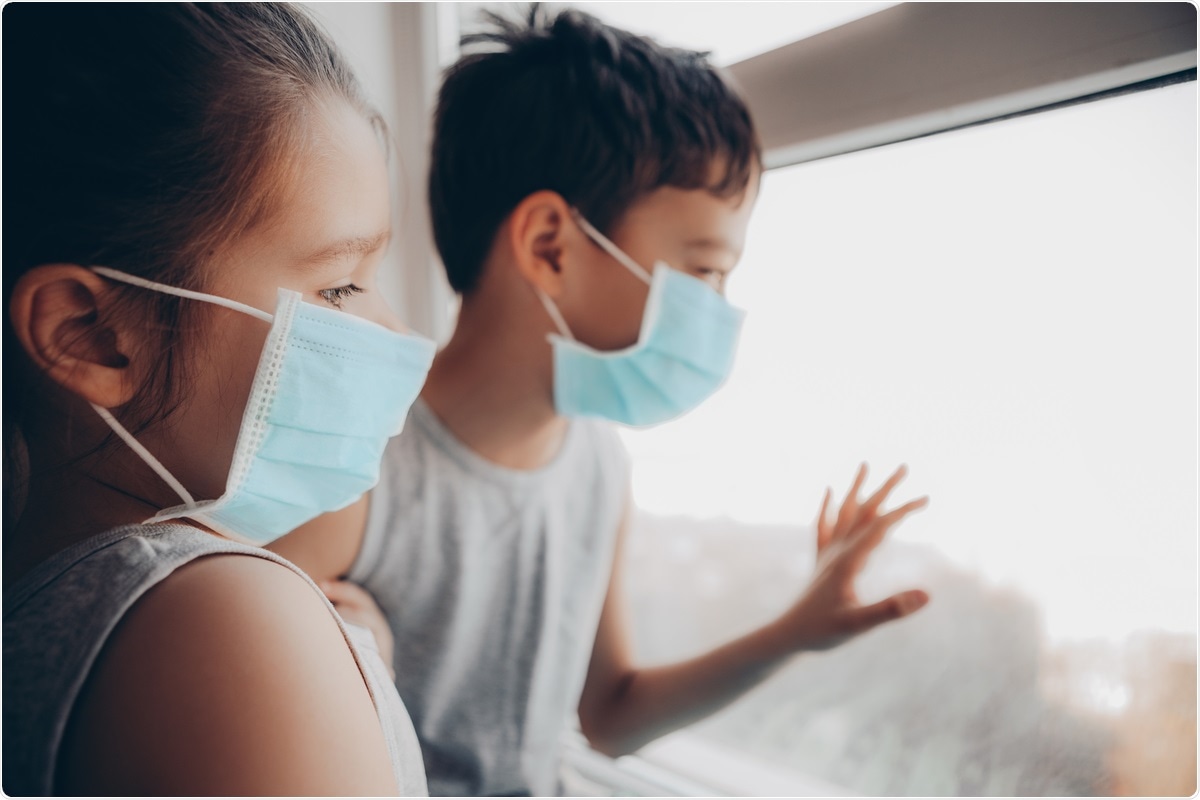Coronavirus disease 2019 (COVID-19) seroprevalence studies have been used since early in the pandemic to identify population immunity, rates of transmission, risk factors, and the response of 'immune' individuals to variants of concern. Generally, these studies involve gathering serum from individuals, recording evidence of prior COVID-19 infection/vaccination, and then examining the response of the sera using commercially available assays for antibodies against severe acute respiratory syndrome coronavirus 2 (SARS-CoV-2) proteins.
 Study: Methods for Estimation of SARS-CoV-2 Seroprevalence and Reported COVID-19 Cases in U.S. Children, August 2020—May 2021. Image Credit: L Julia/ Shutterstock
Study: Methods for Estimation of SARS-CoV-2 Seroprevalence and Reported COVID-19 Cases in U.S. Children, August 2020—May 2021. Image Credit: L Julia/ Shutterstock

 This news article was a review of a preliminary scientific report that had not undergone peer-review at the time of publication. Since its initial publication, the scientific report has now been peer reviewed and accepted for publication in a Scientific Journal. Links to the preliminary and peer-reviewed reports are available in the Sources section at the bottom of this article. View Sources
This news article was a review of a preliminary scientific report that had not undergone peer-review at the time of publication. Since its initial publication, the scientific report has now been peer reviewed and accepted for publication in a Scientific Journal. Links to the preliminary and peer-reviewed reports are available in the Sources section at the bottom of this article. View Sources
Normally, these tests are against either the nucleocapsid (N) antibodies or antibodies that bind to the receptor-binding domain (RBD) of the S1 subunit of the spike protein. The spike protein is integral to the pathogenesis of SARS-CoV-2 – the RBD binds to angiotensin-converting enzyme 2 (ACE2) to allow viral entry and the N-terminal domain of the S2 subunit is responsible for membrane fusion.
Most of these studies take place in adults, but as schools reopen, there is considerable worry over the spread of variants of concern such as the Delta variant through children. Researchers from the Centers for Disease Control and Prevention (CDC) have investigated differences in seroprevalence across pediatric age groups to estimate an infection to case ratio. This could allow further exploration of trends of COVID-19 transmission in children.
A preprint version of the study is available on the medRxiv* server while the article undergoes peer review.
The study
The researchers partnered with three laboratories to test random samples of sera submitted for routine clinical testing using commercially available assays – three assays were used, two of which targeted the N protein, one of which targeted the S protein. These were used between August 2020 and January 2021. Between February and May 2021, the samples were tested for Ig or IgG anti-N antibodies. Weighted estimates of seropositivity were calculated for each state and month, accounting for differences in age, sex, and urban/rural residency.
Using a post-stratification process known as raking and layered bootstrapping, the scientists could account for the differences between the assays used. The mean monthly seroprevalence estimates were multiplied by population by age in each state and each month to calculate the cumulative infections for each age group. Date of illness was defined by initial symptom onset, earliest recorded date, or date reported to CDC. Data from 14 states, as included in the analysis, from various geographical locations within the U.S.
Over 67,000 serum specimens from children were tested between August 2020 and May 2021. Following January 2021, serum specimens from eight states tested for anti-N antibodies using pan-Ig tests, and an additional six states tested for IgG-specific antibodies were also included in the researchers' analysis.
Results showed that the numbers of SARS-CoV-2 infections were slightly higher in estimates across the board, with a wide range of ratios for different states; New Jersey showed 58.2, Connecticut showed 0.8. The infection: case ratio was highest from August to October 2020 and remained stable until May 2021. In general, the pan-Ig anti-N assays showed higher ranges of infection: case ratios than the IgG-specific immunoassays.
The authors conclude that while seroprevalence of anti-SARS-CoV-2 antibodies is higher in children than expected, the vast majority of children as of May 2021 do not show evidence of previous infection by the disease. While this may be a relief for parents, these results may not remain true for long.
During the vast majority of this time, many states imposed restrictions on movement, contacts, and social distancing to curb the spread of the disease and attempt to curb class sizes or close schools altogether. With many of these restrictions being removed, and schools reopening, the disease could run rampant faster than seen before.

 This news article was a review of a preliminary scientific report that had not undergone peer-review at the time of publication. Since its initial publication, the scientific report has now been peer reviewed and accepted for publication in a Scientific Journal. Links to the preliminary and peer-reviewed reports are available in the Sources section at the bottom of this article. View Sources
This news article was a review of a preliminary scientific report that had not undergone peer-review at the time of publication. Since its initial publication, the scientific report has now been peer reviewed and accepted for publication in a Scientific Journal. Links to the preliminary and peer-reviewed reports are available in the Sources section at the bottom of this article. View Sources
Journal references:
- Preliminary scientific report.
Couture, A. et al. (2021) "Methods for Estimation of SARS-CoV-2 Seroprevalence and Reported COVID-19 Cases in U.S. Children, August 2020 - May 2021". medRxiv. doi: 10.1101/2021.09.26.21263756, https://www.medrxiv.org/content/10.1101/2021.09.26.21263756v1
- Peer reviewed and published scientific report.
Couture, Alexia, B Casey Lyons, Megha L Mehrotra, Lynn Sosa, Ngozi Ezike, Farah S Ahmed, Catherine M Brown, et al. 2022. “Severe Acute Respiratory Syndrome Coronavirus 2 Seroprevalence and Reported Coronavirus Disease 2019 Cases in US Children, August 2020–May 2021.” Open Forum Infectious Diseases 9 (3). https://doi.org/10.1093/ofid/ofac044. https://academic.oup.com/ofid/article/9/3/ofac044/6517552.